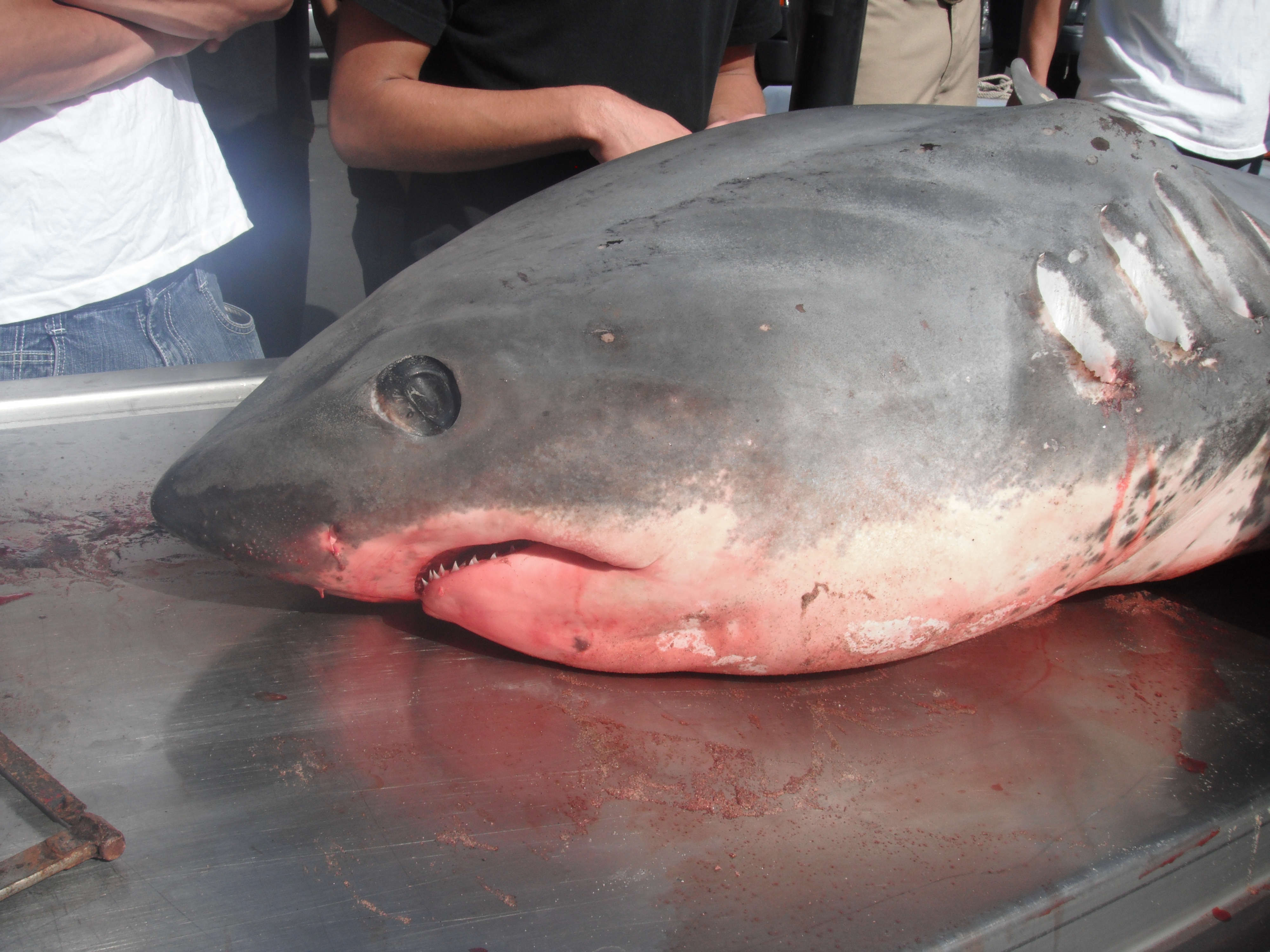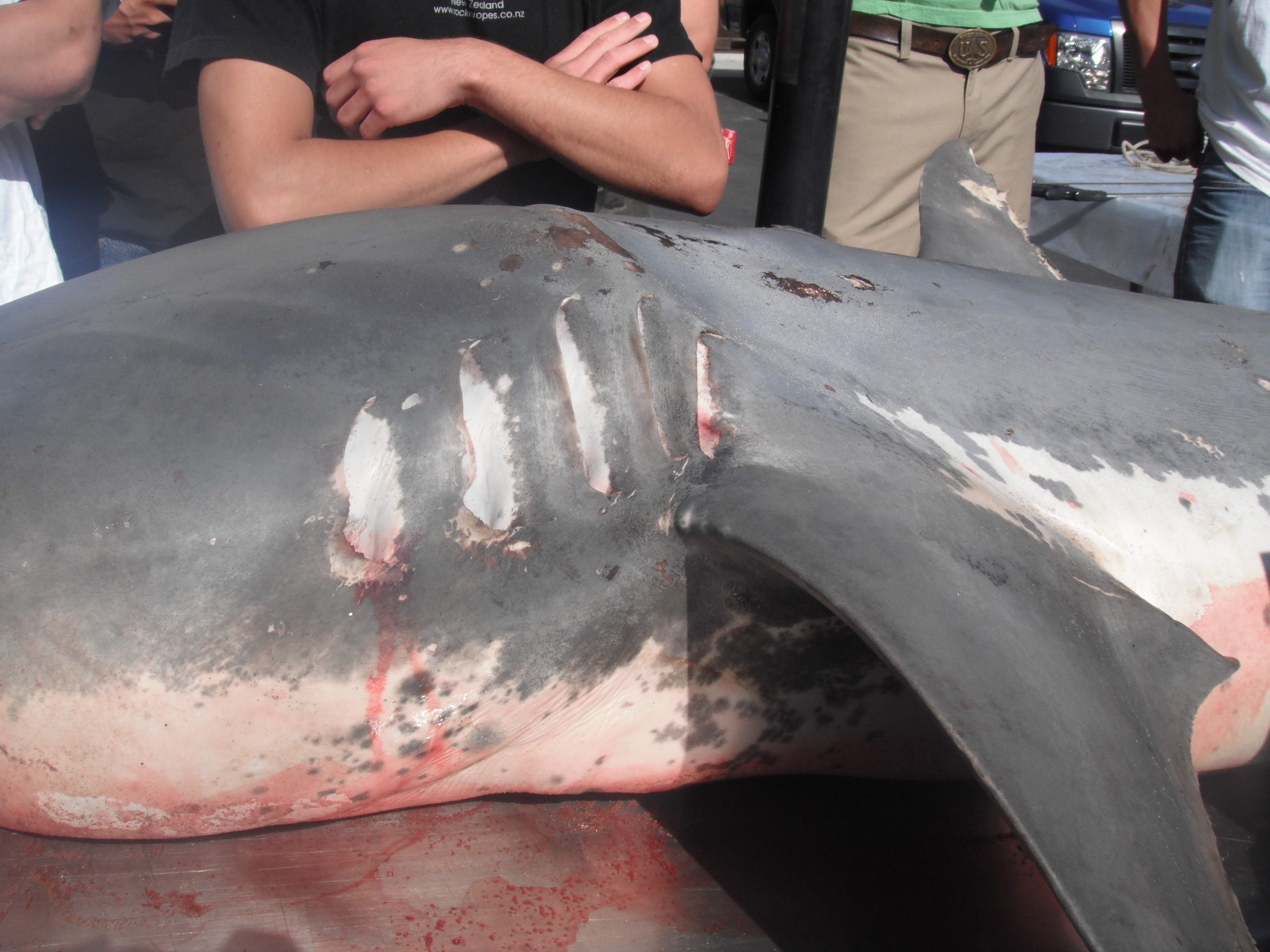By Jessica Jang
On Labor Day weekend, Moss Landing Marine Laboratories' own Pacific Shark Research Center (PSRC) had the opportunity to dissect a 14.7 feet long common thresher shark (Alopias vulpinus). The female shark was found washed up on the beach on Moss Landing already dead.

The PSRC is part of the National Shark Research Consortium for the West Coast. Currently there are 7 students enrolled in this department led by the program director, Dr. David Ebert, also a MLML alumni, and a handful of undergraduate volunteers from San Jose State University and California State University: Monterey Bay all who are ready to learn more about elasmobranchs!
The students were pretty amazed to see such small teeth on such a large shark.  The teeth on this animal say a lot about what it eats. Schooling fish such as sardines and anchovies, as well as cephalopods are its preferred prey. Thresher sharks are part of the mackerel shark order (Lamniformes) and excel at speed and long distances. A few examples of this order include, the white shark (Carcharodon carcharias), the makos, shorfin mako (Isurus oxyrinchus), longfin mako (Isurus paucus), the salmon shark (Lamna ditropis), and the porbeagle shark (Lamna nasus). These species in particular are endothermic, meaning that they can thermoregulate their own body temperature to several degrees warmer than the ocean water, allowing better foraging opportunities.
The teeth on this animal say a lot about what it eats. Schooling fish such as sardines and anchovies, as well as cephalopods are its preferred prey. Thresher sharks are part of the mackerel shark order (Lamniformes) and excel at speed and long distances. A few examples of this order include, the white shark (Carcharodon carcharias), the makos, shorfin mako (Isurus oxyrinchus), longfin mako (Isurus paucus), the salmon shark (Lamna ditropis), and the porbeagle shark (Lamna nasus). These species in particular are endothermic, meaning that they can thermoregulate their own body temperature to several degrees warmer than the ocean water, allowing better foraging opportunities.

They also have big eyes to find prey and large gill slits for oxygen. Since these species are pelagic species, they require a lot of oxygen to keep moving. Lamniformes (mackeral sharks) breathe through ram ventilation, where the animal swims while opening its mouth. These species require constant motion or else they'll drown. However, some sharks have adapted to living life on the bottom, and can actively pump water pass their gills with their spiracles, which are tiny holes usually located behind the eyes on the shark. In larger oceanic species, the spiracles have lost its ability to pump water.
The dissection was a very exciting and rare opportunity, since thresher sharks are pelagic predatory fish, that spend their lives in the open ocean. There are currently only three known species of thresher sharks, the common (Alopias vulpinus), pelagic (Alopias pelagicus), and the big-eye thresher (Alopias superciliosus).
Previously it was thought that thresher sharks used to swing their tails around to catch their prey. However, a new study this summer show that they actually use their long caudal tails to stun their prey. Scientists managed to catch footage of the pelagic thresher shark (Alopias pelagicus) in action.
Students were able to take morphometric data of the shark by measuring everything from body length and fin lengths, counting the vertebrae, and noting of any visible scars or injuries.

One noticeable wound was the large propeller strike that was near the end of her body.

They also took tissue samples of the shark's muscles, reproductive organs, and liver to detect mercury levels. Since sharks are apex predators, meaning they eat at top of the food chain, toxins and heavy metals can bioaccumulate which can cause detrimental health problems if they are in high concentrations. Stay tuned to see if we found something revealing on what may have caused her death.

